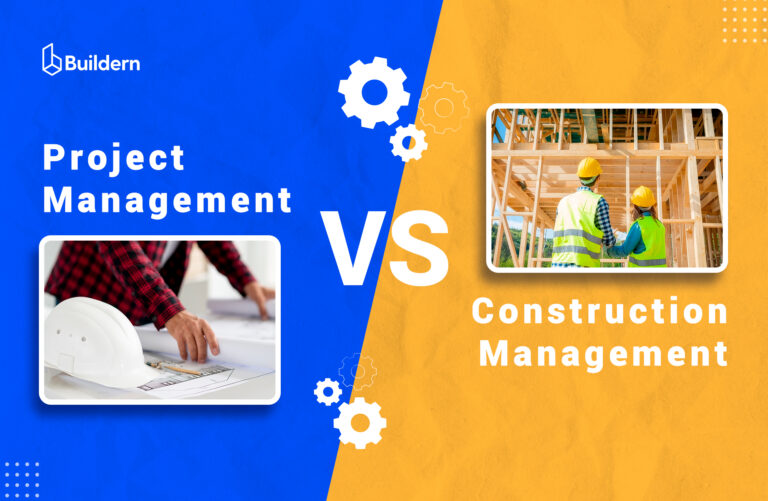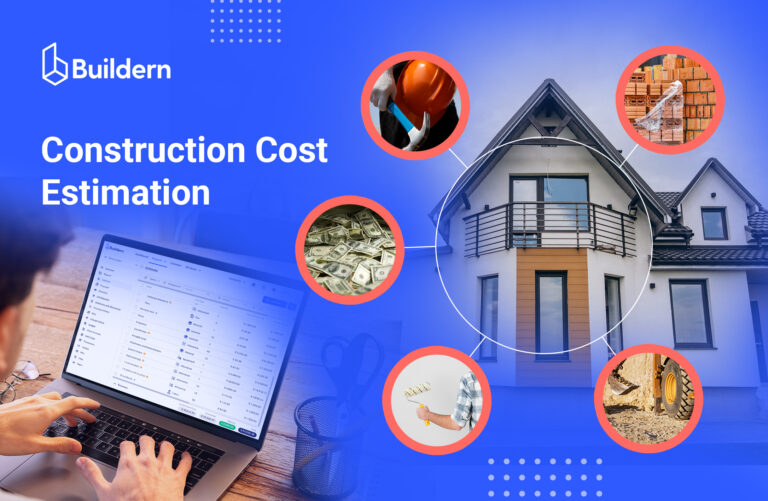Construction Soft Costs: Overview, Types, and the Best Practices for Managing Them
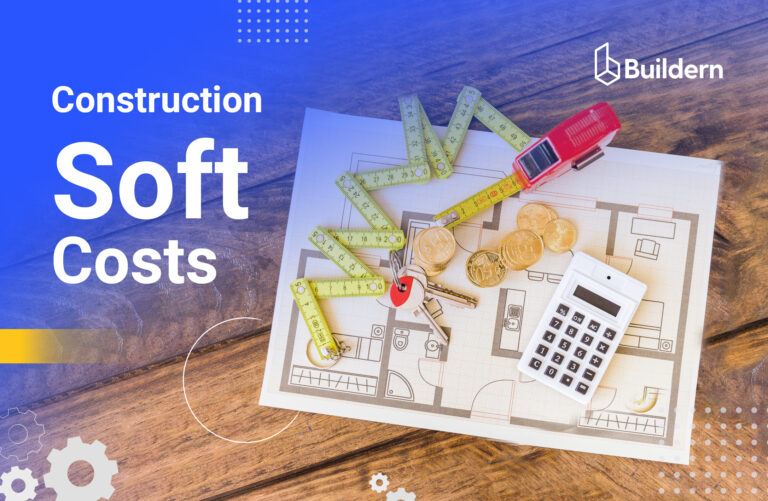
Published January 21, 2025. Updated October 17, 2025
In construction, a precise estimate serves as a building block for any project’s success.
However, it is not only the bricks, cement, or wood that make up the entire cost.
There are some intangible expenses hidden behind closed doors that are often overlooked. Those so-called soft costs include not only prices of materials or labor fees, but also project management expenses or taxes.
To help you make an accurate estimate for your project, my blog will be a detailed guide about construction soft costs and how to manage them.
Table of Contents
- Soft and Hard Costs Explained
- Importance of Calculating Construction Soft Costs
- Types of Soft Costs
- Best Practices for Accurately Calculating Construction Soft Costs
- Final Thoughts

Soft and Hard Costs Explained
Soft costs are not directly connected to the physical construction of the building. This may include design and development, administrative, legal, and financial expenses.

For me, these are important parts of construction budget management, requiring in-depth review to ensure a project’s financial viability and overall success.
Meanwhile, hard costs refer to the tangible construction expenses. Those are directly connected to the physical construction of the building.
Typical hard costs include materials, labor, equipment rentals, and subcontracts. Generally, hard costs constitute a huge portion of the construction project and serve as essential components for precise construction planning. Thus, it is important to carefully consider all the hard costs that will guarantee a successful reconstruction project.
Both types of costs are essential for making accurate budget forecasts. While hard costs do account for up to 70-80% of the entire budget, soft costs should also be considered carefully as they will safeguard a project’s financial health.
Compared to soft costs, hard costs are easier to estimate since they revolve around material and labor. Soft costs also tend to change throughout the project.
Thus, having a detailed cost breakdown and constant budget monitoring will ensure that everything is going according to plan. However, this does not mean that soft costs are impossible to estimate or track. With proper planning and the right tools, they can be forecasted and managed just as effectively as hard costs.
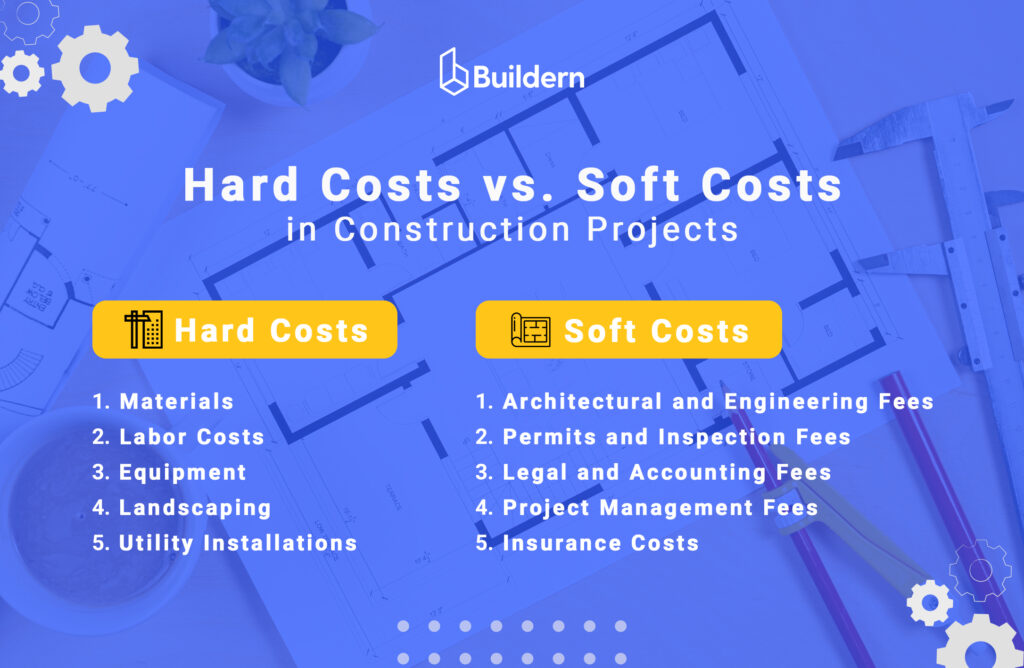
Importance of Calculating Construction Soft Costs
Miscalculating construction soft costs even by a small margin can significantly affect a project’s viability and financial standing. Often, construction soft costs are underestimated, which may lead to budget overruns. To reduce this risk, it is necessary to properly plan everything and consistently monitor the budget.
While budget overruns do seem easy to control during the early stages of estimating, those costs may build up later, eventually resulting in significant financial tension.
This, in turn, may affect the decision-making of homebuilders, forcing them to redirect funds from other project areas. It can even cease construction projects until additional financial resources are available.
Types of Soft Costs
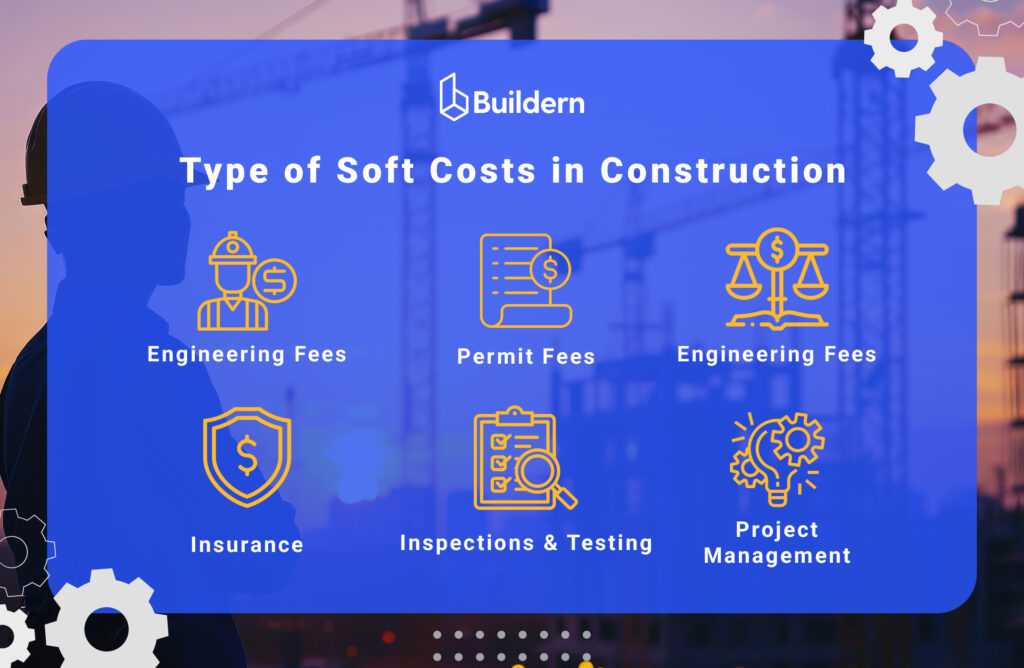
Depending on the construction project and its scope, the types of soft costs can be different. A certain type of soft cost included in one project might be irrelevant for the other, and vice versa. The scope of projects can vary significantly, and so do construction soft costs.
Below are various types that are usually found in construction projects.
Design and Development Costs
Generally, design and development costs emerge during the construction planning phase. Such costs include:
- Engineering and Architectural Costs: These refer to the expenses given to various professionals responsible for the project’s design. It also includes subconsultants specializing in diverse spheres, such as mechanical, structural, and electrical engineering.
- Feasibility Studies: It is an assessment of the project that typically includes evaluating market demands, financial performance, and potential risks. These reports have an impact on decision-making and can significantly affect the project’s success.
- Site Evaluation and Surveys: Here, I mean soil tests and topographical surveys. They are essential components of the preconstruction phase of the project. Conducting site evaluations and surveys will give enough information about the site, helping builders make the right decision.
Financing Costs
Every construction project comes with a variety of financial obligations. Among the key financing-related costs are loan origination fees, which refer to the charges imposed by banks or financial institutions to process and establish a loan for the project.
These typically cover administrative expenses associated with evaluating and setting up construction financing.
Another major factor is the interest in construction loans. In major construction projects, when financing is required, accrued interest on the loans may pile up, especially if there are unforeseen project delays. To ensure accuracy, it’s essential to include projected loan interest during the preconstruction budgeting phase.
In addition to these direct financing costs, contractors must also account for performance bonds. A performance bond is a type of surety bond that guarantees the contractor will complete the project according to the agreed terms.
Legal and Administrative Costs
Typical legal and administrative costs in construction projects cover a range of essential expenses that ensure the project’s compliance and smooth execution. These often include legal fees, which refer to the costs of legal services related to the project.
Such fees may arise during contract negotiations, dispute resolutions, or while ensuring that all agreements meet regulatory requirements.
Meanwhile, insurance fees are another important part of a project’s administrative expenses. They cover various types of insurance, including general liability, workers’ compensation, professional liability, and automobile liability insurance.
Taxes also play a significant role and may vary depending on the project’s location, type, and scope. Since tax requirements differ across regions, it’s always best to consult with a tax advisor to determine which taxes apply to a specific project.
Finally, there are also licenses and permits that are secured during the preconstruction phase.

Operational and Miscellaneous Costs
As construction projects progress through different stages, additional expenses often appear. Among these are marketing and advertising fees, which cover the cost of promoting either a contractor or a building.
These costs play a crucial role in attracting clients or buyers, especially in the case of residential and commercial projects.
Hiring experienced project managers or management teams responsible for coordinating all aspects of the construction process is an important part of expenses. Effective project management helps maintain schedules and control budgets.
Besides, I cannot imagine a competitive construction company that is not using a construction software management platform. Those costs should also be included in the budget of a building company.
Operational costs may also include consultancy while the project is developing. For example, external consultants can be hired to provide specialized expertise at different stages of construction.
Best Practices for Accurately Calculating Construction Soft Costs
While invisible, those costs are an important component of the construction budgeting and can significantly affect the overall success of the project. For me, estimation of these costs is essential for financial stability.
In fact, overlooking soft costs is one of the most frequent construction budgeting mistakes. To help you understand how to accurately estimate construction soft costs, I have identified the best practices I use.
Accurate Budgeting and Planning
It all starts from a preconstruction stage, when you can minimize the risk of unexpected expenses later in the project. Accurate planning refers not only to the organization of the actual building process, but also to establishing a communication process. Here are some recommendations that will work for any project:
Stay Organized
Hard costs are usually clear: you know how many bricks or how much concrete you need. Because of their vague nature, it’s easy to overlook some of them. That’s why it’s worth taking the time to list out every potential soft cost. Breaking them down into categories helps you see the full picture and keeps your budget on track.
Plan for the Unexpected
Hard costs are predictable, but soft costs are not. To avoid surprises, it’s smart to set aside a contingency fund for soft costs. Many construction companies use construction allowances to cover unexpected expenses, and managers can adjust them as needed to keep the project financially safe.
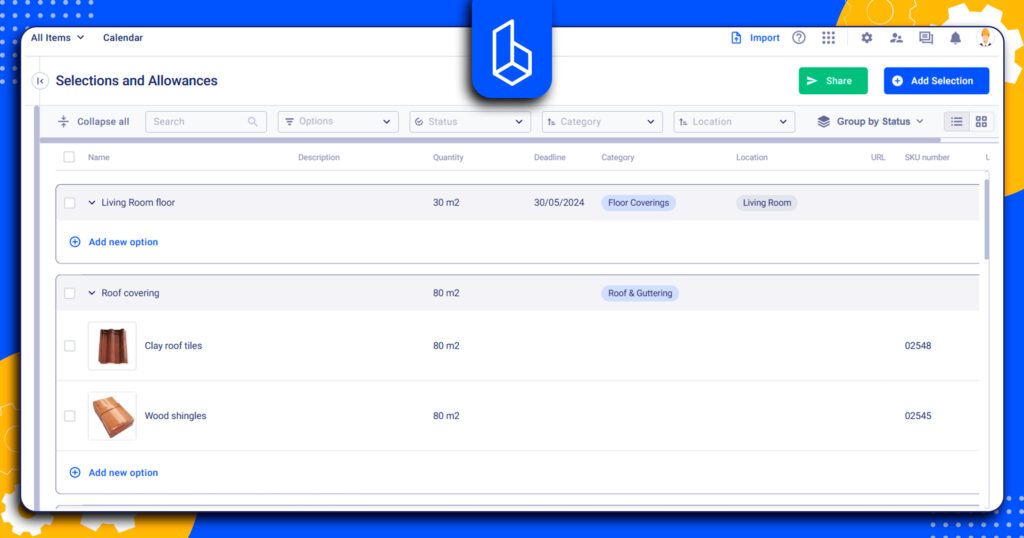
Keep Communication Clear
Clear communication within the team helps keep the project on budget. Involving experts and professionals in planning and technical discussions allows everyone to share insights and create a more accurate soft cost estimate.
Submitting an RFI (Request for Information) is also a good way to maintain communication and ensure all potential costs are considered.
Communication channels are another headache when there are many stakeholders. Unless there are in-built messages, there is a big risk of miscommunication. Searching for many channels for one approval takes too much time and effort.
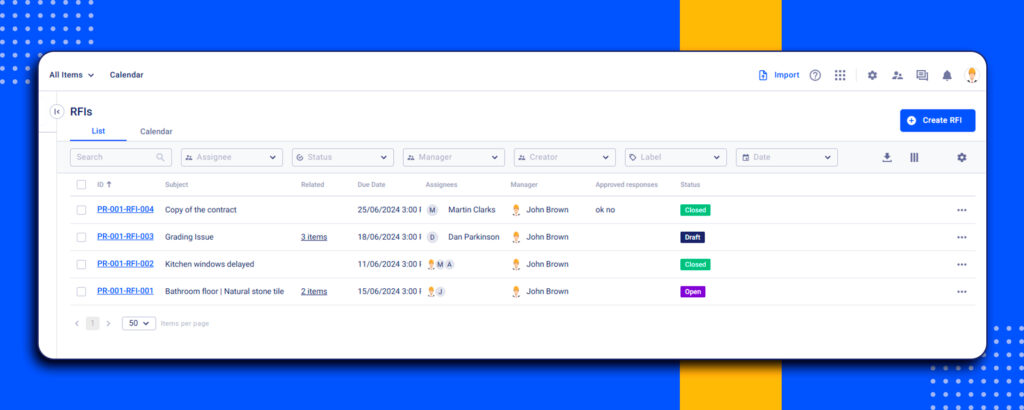
Formulate Clear Contracts
A contract is a building block for managing soft costs. A well-structured contract can help you anticipate these costs, while vaguely drafted documents are likely to lead to budget overflow. Below, we will explore three steps that will allow you to come up with a carefully drafted contract.
Determine Scope of Work
Understanding the scope of the project will help you highlight soft costs that are associated with design, planning, and more. A lack of a clearly defined scope can lead to potential changes in the entire project, leading to additional soft costs.
Identify Protocols
Establishing clear guidelines is key to managing soft costs effectively. Define how contracts, permits, and other critical documents will be tracked and shared throughout the project. Proper documentation helps prevent delays and keeps the budget under control.
Define Liability
Another important practice for accurately calculating soft costs is defining its liabilities. Including specific terms and referring them to the person responsible for regulatory compliance and permits will ensure that everything runs smoothly. Missing this important step in the construction projects may lead to final and legal complications and result in budget overruns.
Hire Skilled and Experienced Professionals
If you think about how to start a construction company, begin by hiring reliable and professional workers. From my experience, construction teams of qualified specialists can make you more competitive. Based on their previous experiences, they might anticipate challenges as well as costs that were not evident during the preconstruction phase.
For instance, if the architect has previously worked in a similar construction site, they may recognize potential changes, such as soil conditions. This will allow them to take the necessary measures on time.
Improved Cost Tracking with Construction Software
There are a lot of construction management software solutions that make it easy to track both construction soft costs and hard costs. With a bunch of tools offered by such software, stakeholders can monitor their project expenses.
Construction cost tracking is a process of monitoring and working with the costs related to construction. It offers all the necessary information about the money used throughout the project and the specific things that it was allocated to. This practice includes analyzing and recording both the earned and spent money, ensuring that you stay within your budget.
To simplify this process, I recommend having a contingency plan for all your unknown expenses. With the right construction cost-tracking software in your hand, you will have all the necessary information to make informed decisions and stay within the allocated budget.
Final Thoughts
Estimation is one of the most important parts of a construction project. By equally prioritizing hard and soft costs, you set your project up for financial stability, avoiding unpleasant surprises.
Invest in the right tools for construction estimating and budgeting to ensure accuracy in calculations and have access to real-time insights into your project costs. With the proper tools, you can easily track expenses, forecast potential financial challenges, and make data-driven decisions.
This not only helps to maintain your budget but also enhances efficiency and reduces the risk of costly errors.
What is the Difference between Soft and Hard Costs in Construction?
Hard costs are tangible expenses directly related to the construction of a building, such as materials, labor, equipment rentals, and subcontracts. Soft costs are not directly tied to physical building work, including design and development fees, legal expenses, and construction management software.
How Can I Better Manage and Track Soft Costs?
Best practices include starting with accurate budgeting during the preconstruction phase and setting aside a contingency fund. Maintaining organized documentation and clear communication channels among all stakeholders.
How Much Should I Budget for Soft Costs?
The figures depend on the project scope and the company’s overall budget. If you have many projects and regularly spend large sums on marketing, it does not mean that this will fit a small firm having a couple of clients. One thing is clear that it’s important to track soft costs as attentively as hard costs, not to face financial management problems.


